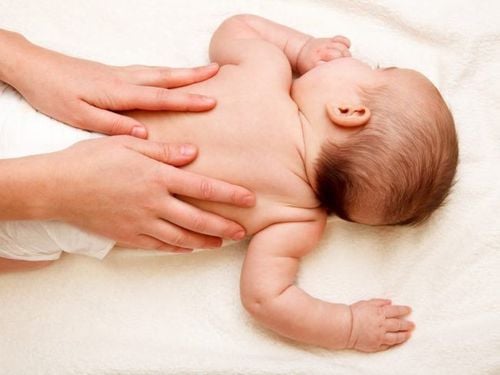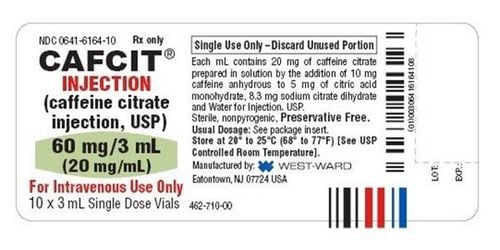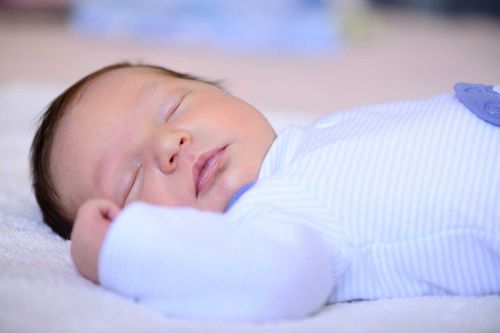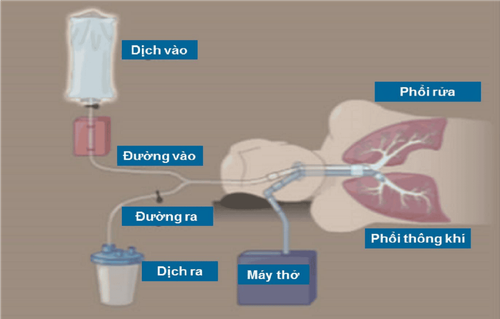This is an automatically translated article.
All parents are very worried when their child is short of breath, or choking, having difficulty breathing. At night, when you listen to the baby's breathing, look at the baby's face to find out any abnormal signs and check the baby's breathing rate and other health conditions to take timely action. time.
1. The necessity of checking the infant's breathing during sleep
If a mother feels it is necessary to check her baby's breathing while she is sleeping or whenever she feels something is wrong, that is absolutely the right thing to do. If a baby is born prematurely or has chronic lung problems or other conditions such as sleep apnea, parents even need to keep an eye on their breathing. baby continuously, at least until the child has a sense of things.
However, for some people, even while their child doesn't have any health problems, they still feel worried that they may still have some serious medical conditions, especially sudden infant death syndrome. As is known, infant sleep is divided into many different stages, sometimes deep and completely quiet, sometimes struggling, uncomfortable sleep. Parents will gradually get used to it, and experts also recommend that it is a habit to check the baby's breathing every night, even for years afterward.

Trẻ sinh non cần được kiểm tra nhịp thở khi ngủ
2. How do parents stop worrying about sudden infant death syndrome?
Parents should also not be overly concerned about sudden infant death syndrome (SIDS). Statistically, sudden death in children is very rare. Only one in 1,000 babies is likely to have this syndrome. Furthermore, more than 90% of sudden infant deaths occur between birth and 6 months of age, and the syndrome is almost absent in children older than 1 year.
Although many theories have been put forward, but currently the cause of sudden infant death syndrome is not fully understood, so there is no way to be sure to prevent it from happening. It is also fortunate that the incidence of sudden infant death syndrome has decreased significantly in recent years as more risk factors have been identified and parents have learned how to help children avoid these factors. that element.
To prevent sudden infant death syndrome, parents or caregivers should put their children to sleep on their backs and absolutely do not let children be affected by cigarette smoke. In addition, do not use pillows or devices to fix the baby's position when sleeping because they are completely ineffective in preventing sudden death syndrome in children, but can also increase the risk of choking on the baby's airway. .
Learn CPR techniques for babies is also a good idea that parents should consider. Knowing CPR can help alleviate some of their fear and can also respond to any respiratory emergency that occurs in a child. Occasionally, local hospitals or medical centers may offer CPR training for newborns, so don't miss the opportunity to sign up for those classes to be somewhat secure. child safety.

Khói thuốc có thể khiến trẻ tăng nguy cơ bị hội chứng đột tử ở trẻ
3. How to know if the child is not breathing and how to handle it?
In most cases, the irregular breathing habits of a newborn baby do not cause too much concern. During sleep, infants may practice a procedure known as cyclic breathing: They will initially breathe faster and deeper, then breathe slower and shallower, and then pause for about 10-15 seconds. before starting a new cycle of breathing and repeating throughout the entire sleep. This breathing method is relatively common, especially with babies. Over time, babies will develop a different breathing pattern as they grow older.
It's also not uncommon for your baby's feet and hands to turn more blue. However, if a child's lips, tongue, entire face or body turn dark or visibly pale, it's an unusual sign that tells parents or caregivers that a child is in real danger. .
If parents suspect their child is not breathing or simply want to reassure themselves to make sure the baby is not having any breathing problems, gently touch or wake the child up. Does the child have any reaction? If the child does not wake up, rub the child's back vigorously or lightly hit his leg. If your baby still doesn't show any signs of responding to your parents' influences, chances are your baby may be experiencing apnea.
In this case, parents should immediately call an ambulance or take the child to the nearest medical facility for an emergency before it is too late. In case you have studied through CPR class for children. Parents need to be very calm, start giving first aid according to what they have learned and ask a loved one to call an ambulance. If alone, perform CPR on baby for about two minutes then call 911 and continue CPR until ambulance arrives or baby can start breathing again.

Khi trẻ có dấu hiệu ngừng thở khi ngủ, ba mẹ hãy xoa lưng trẻ thật mạnh
Statistically, about 1% of infants have a condition known as apparent life-threatening events (ALTE). Those are serious diseases or health conditions that affect a child's life if not detected early and given emergency treatment in time. Call an ambulance immediately if your child suddenly develops one or more of the following while sleeping:
Stops breathing for about 20 seconds or more The baby's limbs and body suddenly stiffen Skin gradually turn blue or pale, sometimes also turn red. Not responding to stimuli from adults Children experiencing life-threatening events will obviously need some tests to find out what is causing the symptoms above. In some cases, the doctor will recommend that parents use an apnea monitor at home for a while so that they can closely monitor the baby's breathing and heart rate. These apnea monitors will be especially helpful to children who have had ALTE but should not be fully trusted in the prevention of sudden infant death syndrome by ALTE.
Newborns have a relatively strange way of breathing. Sometimes the parents themselves can't tell if the baby is breathing or not. Most first-time mothers have also experienced extreme panic, especially in the middle of the night, when their baby stops breathing. It can be a pause in breathing during a baby's breathing cycle, but it can also be a sign of a critical condition if it is accompanied by a few other symptoms, such as pale skin, mucous membranes, no respond to stimuli. In this case, parents need to calmly give first aid to the child with CPR and immediately call an ambulance to take the child to the nearest medical facility before it is too late.
For children to be healthy and develop well, it is necessary to have a nutritious diet in terms of quantity and quality balance. If children are not provided with adequate and balanced nutrients, it will lead to diseases of excess or lack of nutrients, which adversely affect the comprehensive development of children in terms of physical, mental and motor skills. Parents should supplement their children with supporting products containing lysine, essential micro-minerals and vitamins such as zinc, chromium, selenium, and B vitamins to help fully meet the nutritional needs of children. At the same time, these essential vitamins also support digestion, enhance nutrient absorption, help improve anorexia, and help children eat well.
Parents can learn more:
Signs of zinc deficiency in children
Micronutrient deficiency and failure to gain weight in children
Please regularly visit Vinmec.com website and update useful information to take care of your child. Take care of the baby and the whole family.
Reference source: babycenter.com, totallythebomb.com













